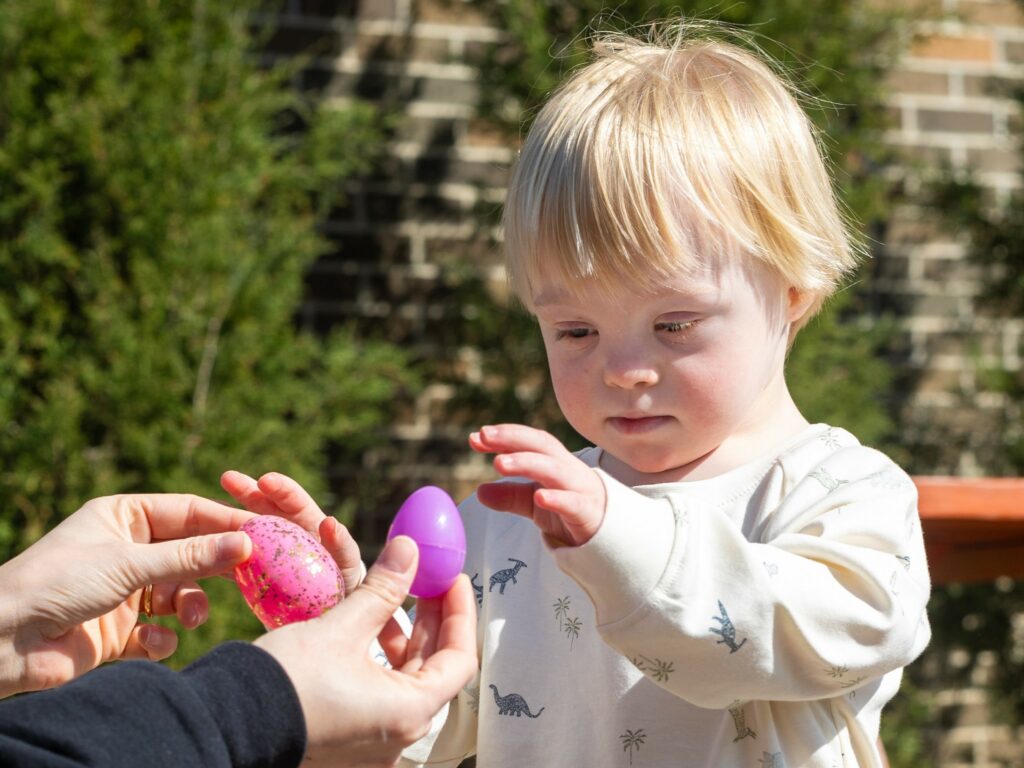
Are you looking for ways to reuse all the plastic Easter eggs your child collects at egg hunts? Here are 10 engaging ways to use them that will encourage learning and motor development!
Sorting by Color
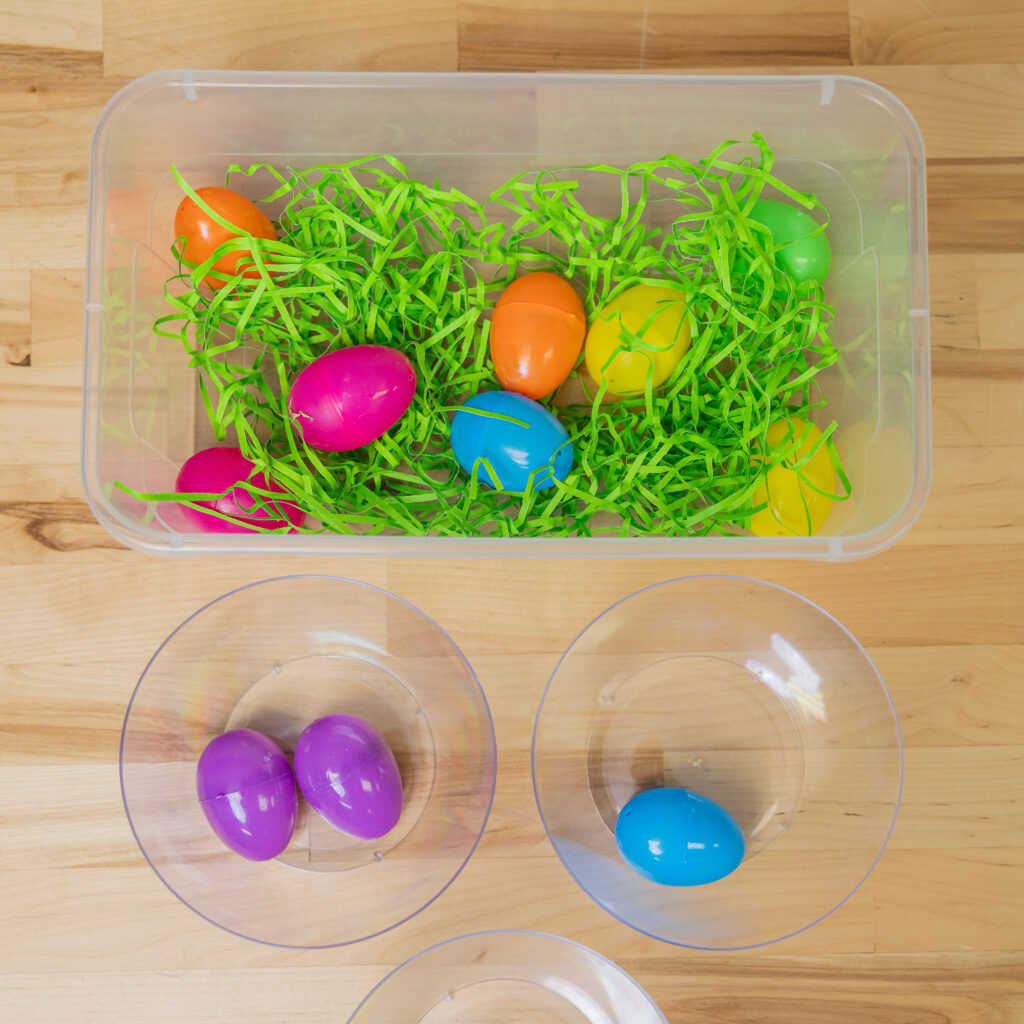
Color sorting is a foundational skill for kids to practice matching, develop an understanding of the concepts of same and different, and enhance their visual-spatial awareness.
All you need is a larger bowl or tub to hold unsorted eggs, and a smaller bowl or tub for each color of egg!
- For littles who are just starting to learn about different colors, start with only two colors of eggs.
- Choose contrasting colors such as blue and orange or red and green to help them see the difference.
- As they become more confident, start adding more colors!
*Bonus: Model naming the colors for your child as they sort to help them practice color names and language development! You can also prompt them to point to the correct colors by saying, “Show me blue!… Show me orange!” etc.
Matching Halves by Color
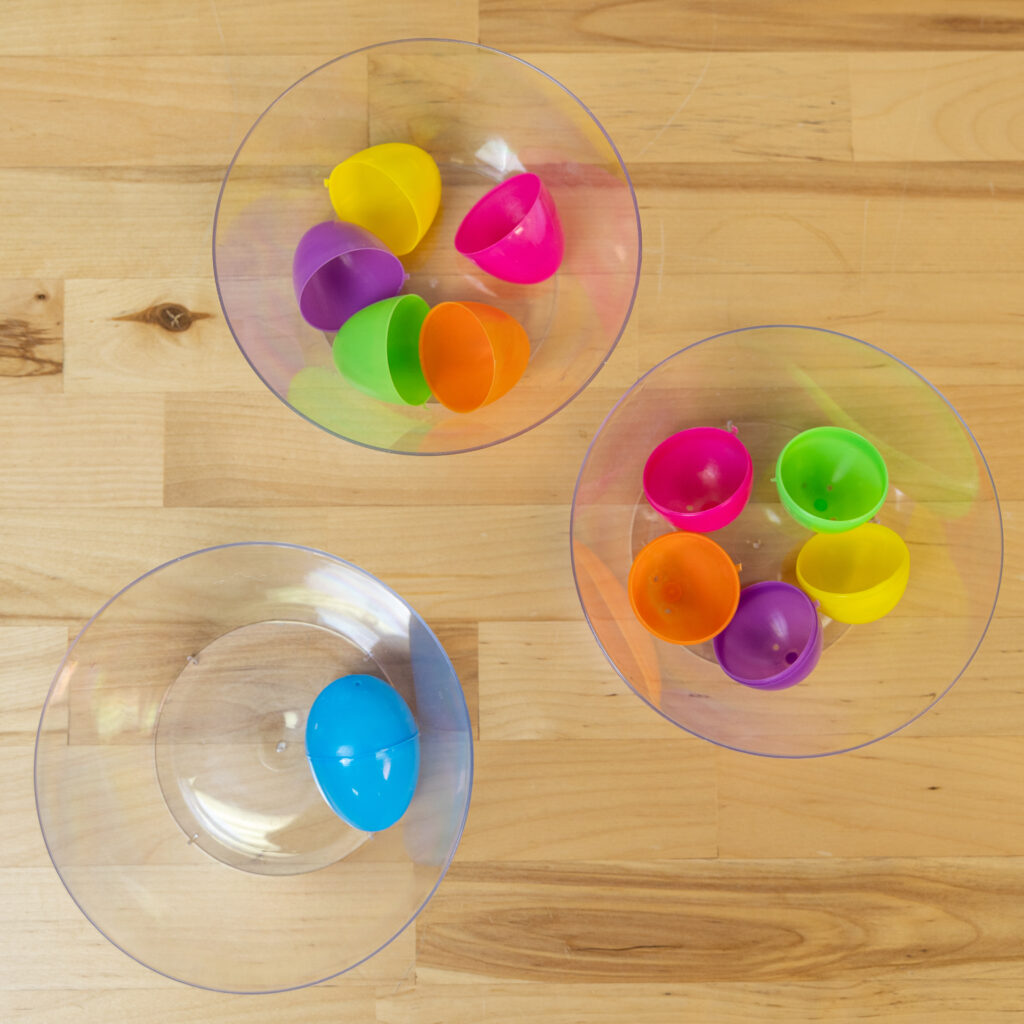
Take your child’s color matching skills a step further by having them match egg halves by color! All you need is a bowl or tub of plastic eggs separated into halves!
- Start with 2-3 contrasting colors.
- Add more colors as they become more confident!
Stacking with Play-Doh
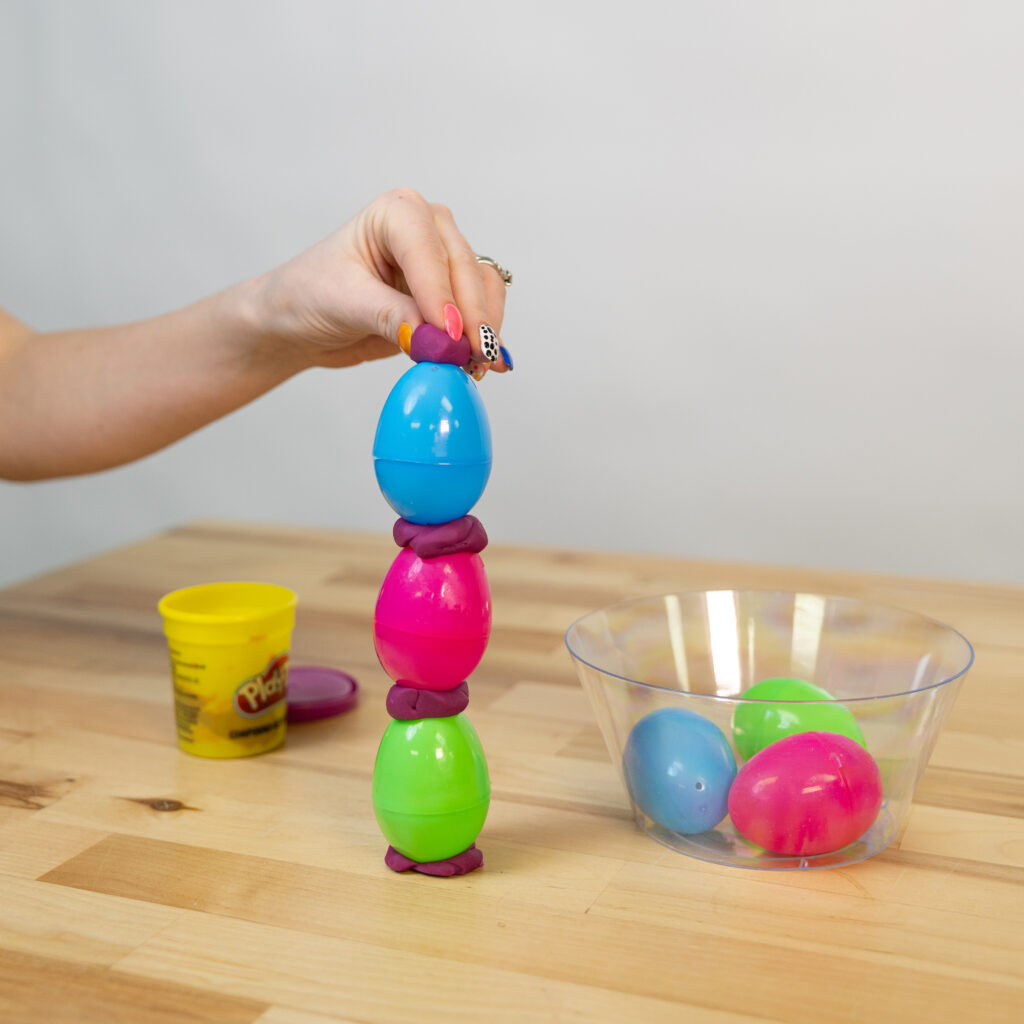
Using play-doh (or homemade salt dough) to stack eggs helps encourage fine motor skills, visual-spatial awareness, and hand eye-coordination!
- Demonstrate stacking an egg on a ball of play-doh.
- Encourage your child to get more play-doh and continue stacking the eggs.
- Name the colors, count the amount of eggs, and encourage them as they build!
Egg Rescue
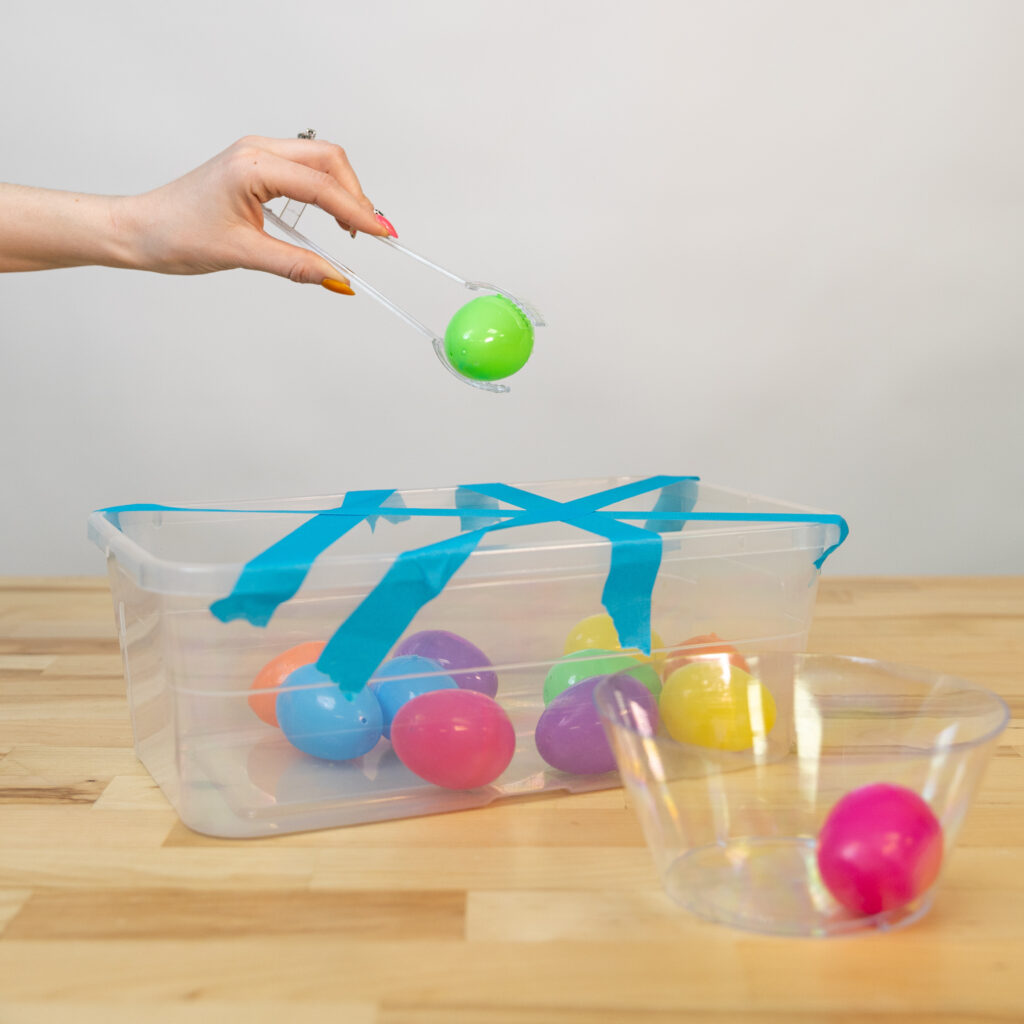
This fun egg rescue activity will help encourage your child’s reasoning skills, hand-eye coordination, visual-spatial skills, fine motor skills!
- Place eggs in a plastic bin or shoebox
- Tape strips of painter’s tape across the top of the bin in different directions, leaving openings big enough for a child to reach through or push a large spoon or ladle through.
- Demonstrate for the child how to reach through and “rescue” the eggs.
Stamp Painting
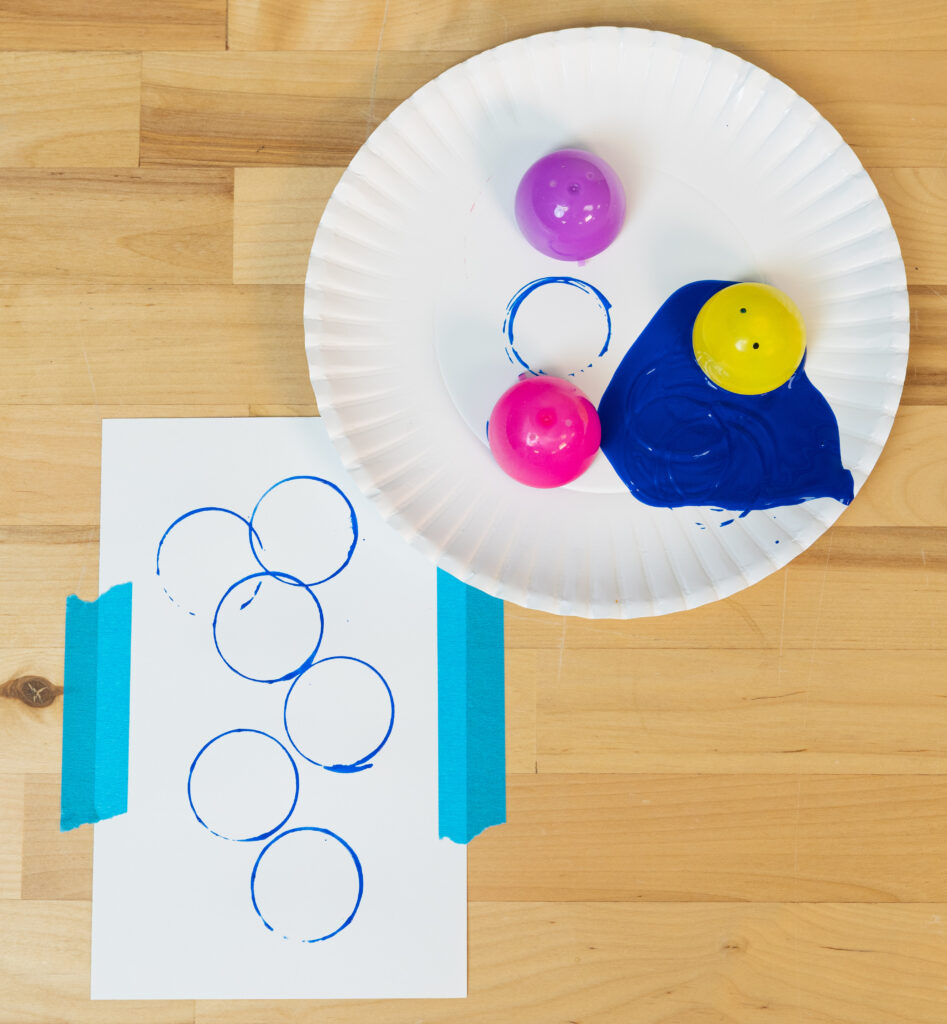
Stamp painting with Easter eggs is a fun way to make circles on paper and practice motor skills, spatial awareness, and hand-eye coordination!
This is a great outdoor activity to reduce the mess! If you complete this activity indoors, a drop cloth will help with clean up and don’t forget to have your child wear a smock, apron, or clothes that can get dirty.
- Tape paper to the table
- Pour small amounts of washable paint onto a paper plate
- Show your child how to dip the eggs into the paint and stamp a circle on their paper
*Bonus: Use painter’s tape to create a shape and have your child stamp all around the painter’s tape to reveal your design when you remove the tape at the end!
Balancing on Paper Rolls
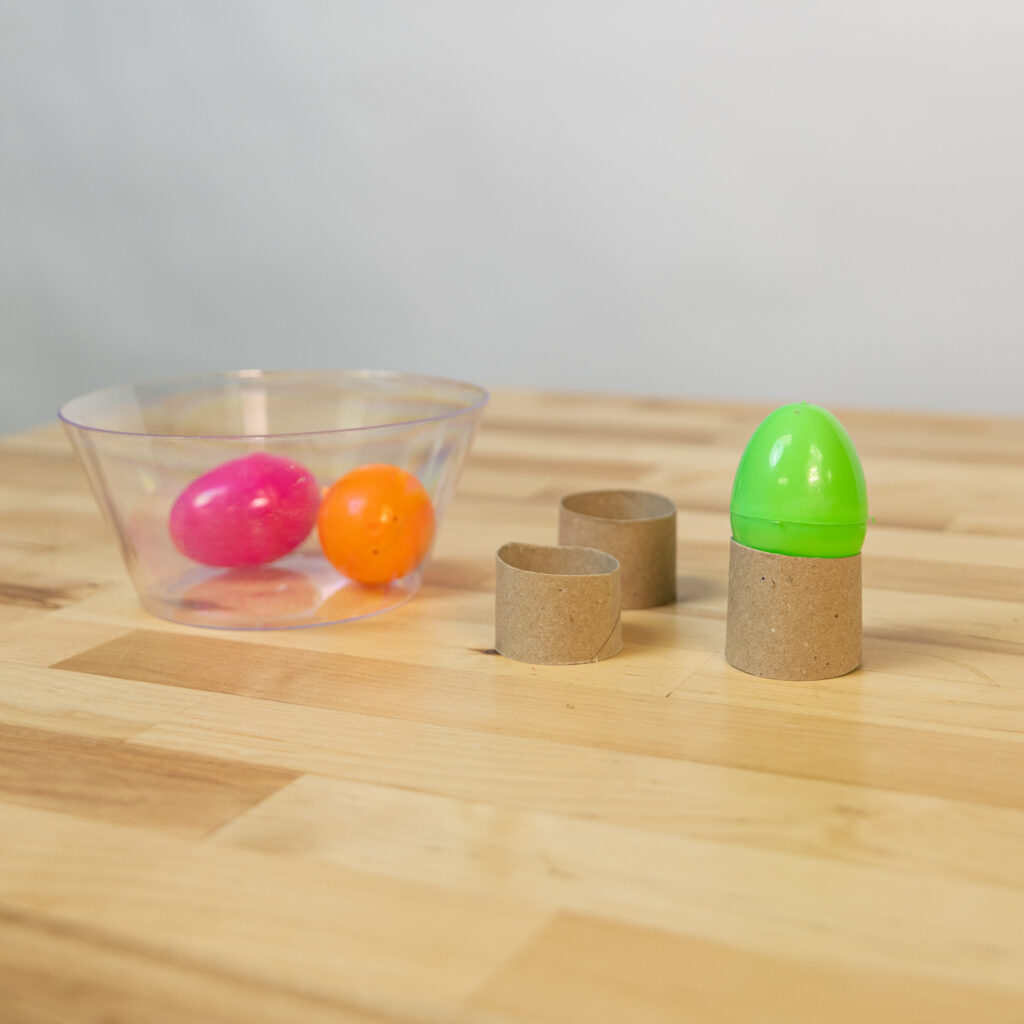
Balancing eggs on toilet paper and paper towel rolls is another fun way to practice understanding the concept of balance, spatial awareness, and hand-eye coordination!
- Cut toilet paper or paper towel rolls into 1-3inch pieces, and place them on a flat surface
- Show your child how to balance the eggs on each paper roll
Upper and Lower-Case Matching
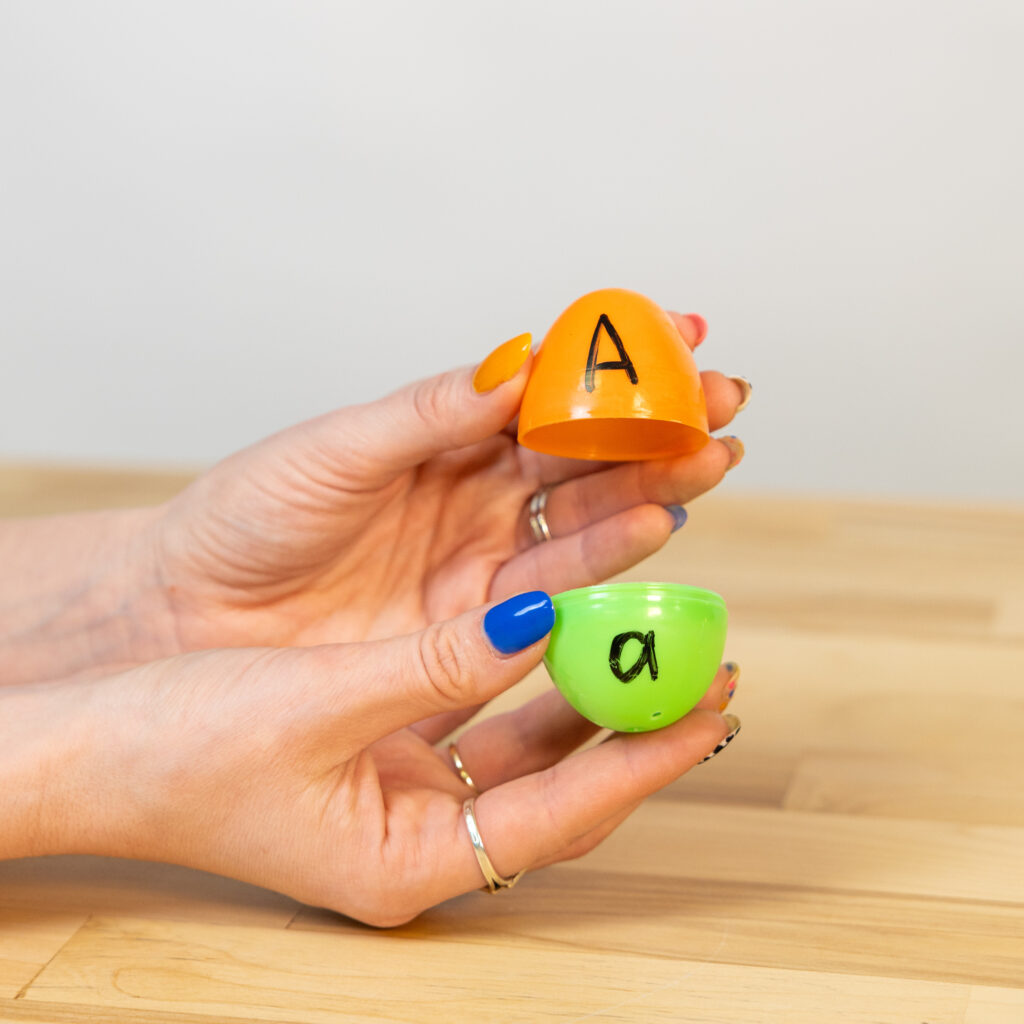
Using plastic eggs to match upper- and lower-case letters is an engaging way to practice emerging literacy skills!
- Use a dry-erase marker to write an upper-case letter on one half of the egg, and the lower-case letter on the other half.
- Start with the letters of your child’s name.
- Add or replace letters as they learn!
Word Families
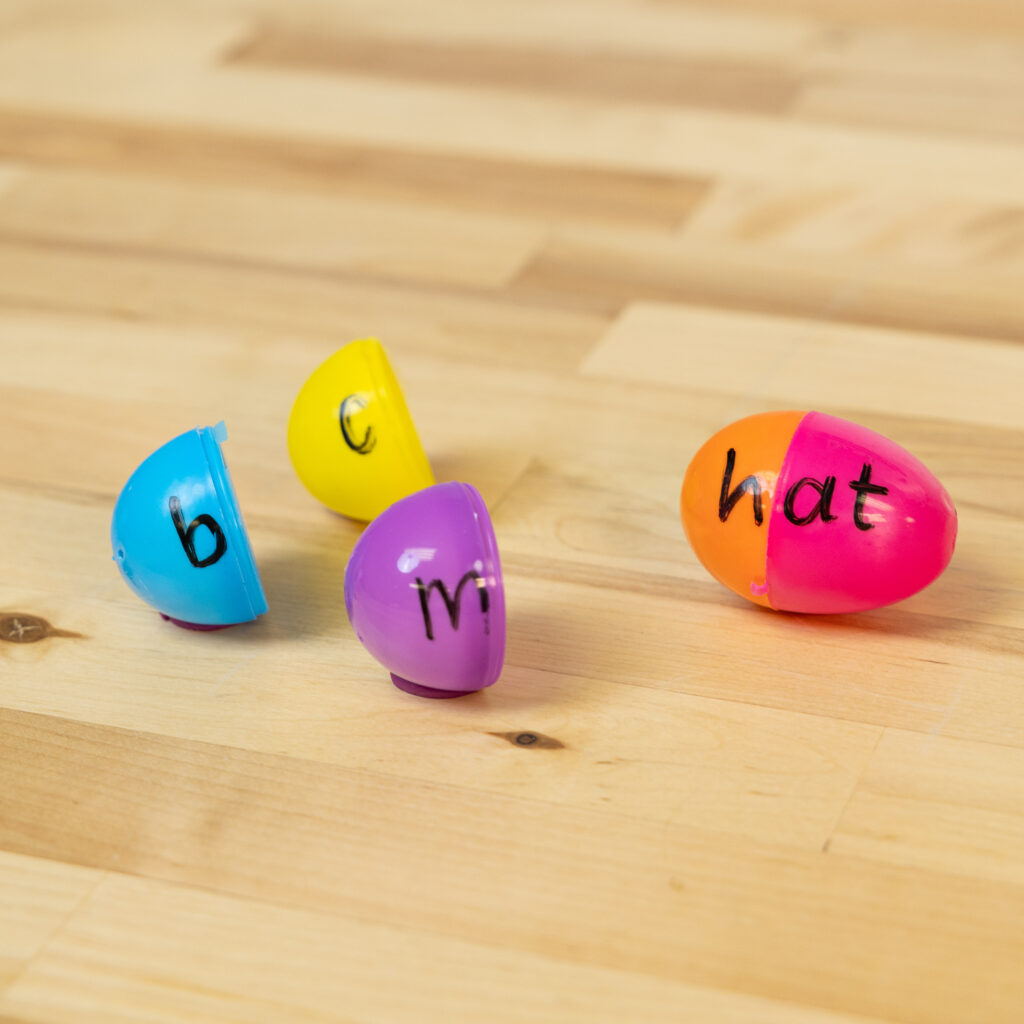
This hands-on literacy activity will help foster your little one’s phonemic awareness as they create different words with the same ending!
- Start with one word family!
- Use a dry erase marker to write the word ending on the right half of an egg.
- Write a consonant on multiple left halves of eggs for your child to attach to the word ending and read.
- Add new word endings one at a time for your child to manipulate and explore.
*Bonus: After your child has mastered putting letters together and reading them, ask them to find a letter to spell a certain word. Say, “Find a letter that will spell the word cat!,” etc.
Number to Dots Matching
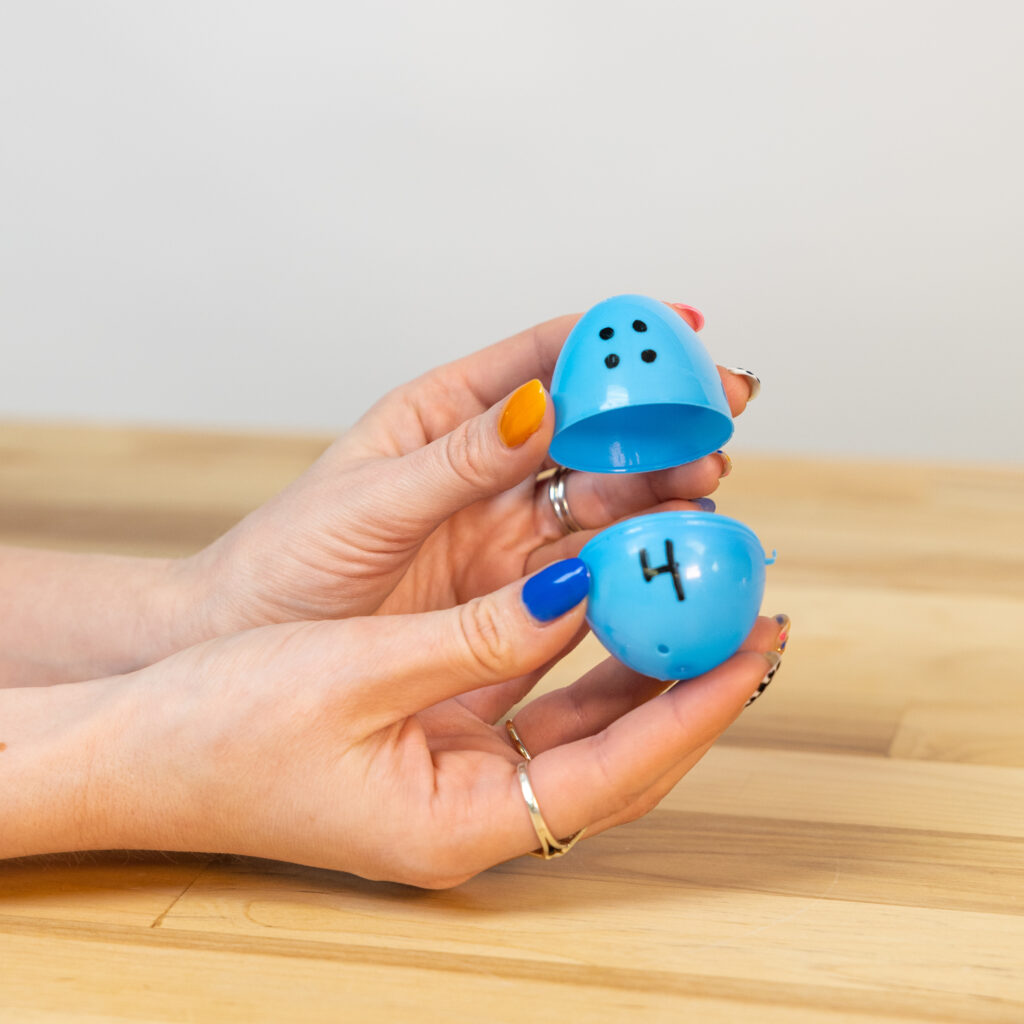
Matching numbers to an amount is an early learning skill that will help encourage number sense and understanding!
- Use a dry-erase marker to write a number on one half of an egg.
- Draw the amount of dots on the other half to match (think about how dots are arranged on dominoes for a familiar pattern).
- Add more numbers as your child is able to count and match more!
DIY Egg Shakers
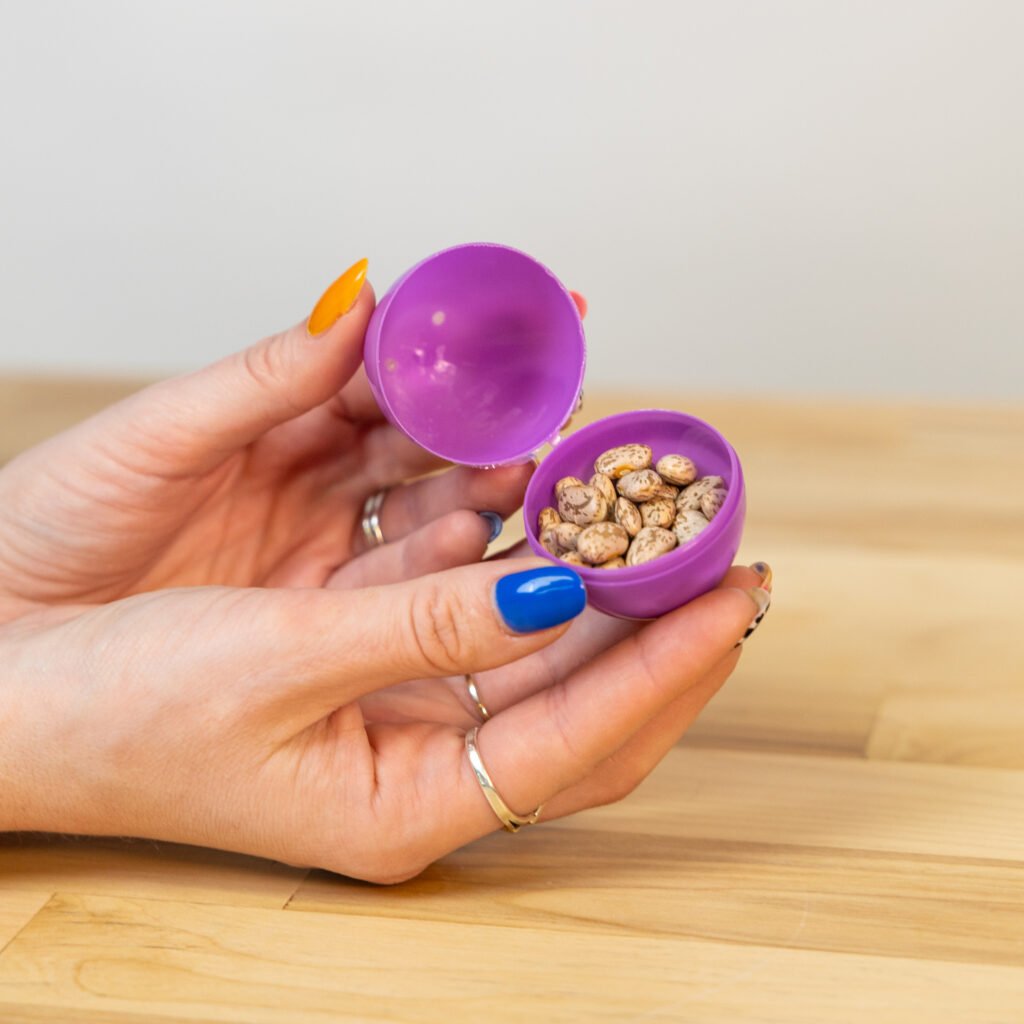
Egg shakers are a fun way to engage your child with rhythm and movement!
- Fill eggs with a spoonful of rice or beans.
- Close the egg and tape it shut.
- Encourage your child to shake their egg shaker while singing or listening to a favorite song!
